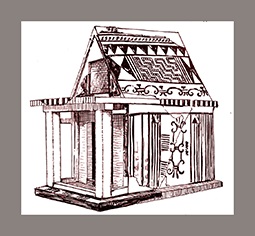Author: A. Pierattini
Download article as .pdf: L’estetica del tempio greco prima degli ordini architettonici
 With only a few exceptions, the scholarship on Greek architecture has addressed the aesthetic of pre Archaic architecture only to a limited extent and often with the purpose of tracing the origins of Doric and Ionic forms and conventions that are documented later, beginning in the second half of the 7th century. Taking a different perspective, this article addresses the aesthetic of pre Archaic Greek architecture in its own context. It focuses on sacred buildings, which beginning at the end of the 8th century B.C. started to differentiate themselves from other buildings for their conspicuous size as well as for their decoration. The chronological scope of this article includes the 8th century B.C., when the evidence of sacred architecture increases dramatical
With only a few exceptions, the scholarship on Greek architecture has addressed the aesthetic of pre Archaic architecture only to a limited extent and often with the purpose of tracing the origins of Doric and Ionic forms and conventions that are documented later, beginning in the second half of the 7th century. Taking a different perspective, this article addresses the aesthetic of pre Archaic Greek architecture in its own context. It focuses on sacred buildings, which beginning at the end of the 8th century B.C. started to differentiate themselves from other buildings for their conspicuous size as well as for their decoration. The chronological scope of this article includes the 8th century B.C., when the evidence of sacred architecture increases dramatically in the Greek world, and the first half of the 7th, when the first experiments with cut stone and terracotta construction began to transform the appearance of the temple. Based on a review of the archaeological evidence, the article examines the treatment of architectural surfaces, the aesthetic importance of wooden columns and the roof, and the radical impact of terracotta roof tiles on the aesthetic of the temple.
